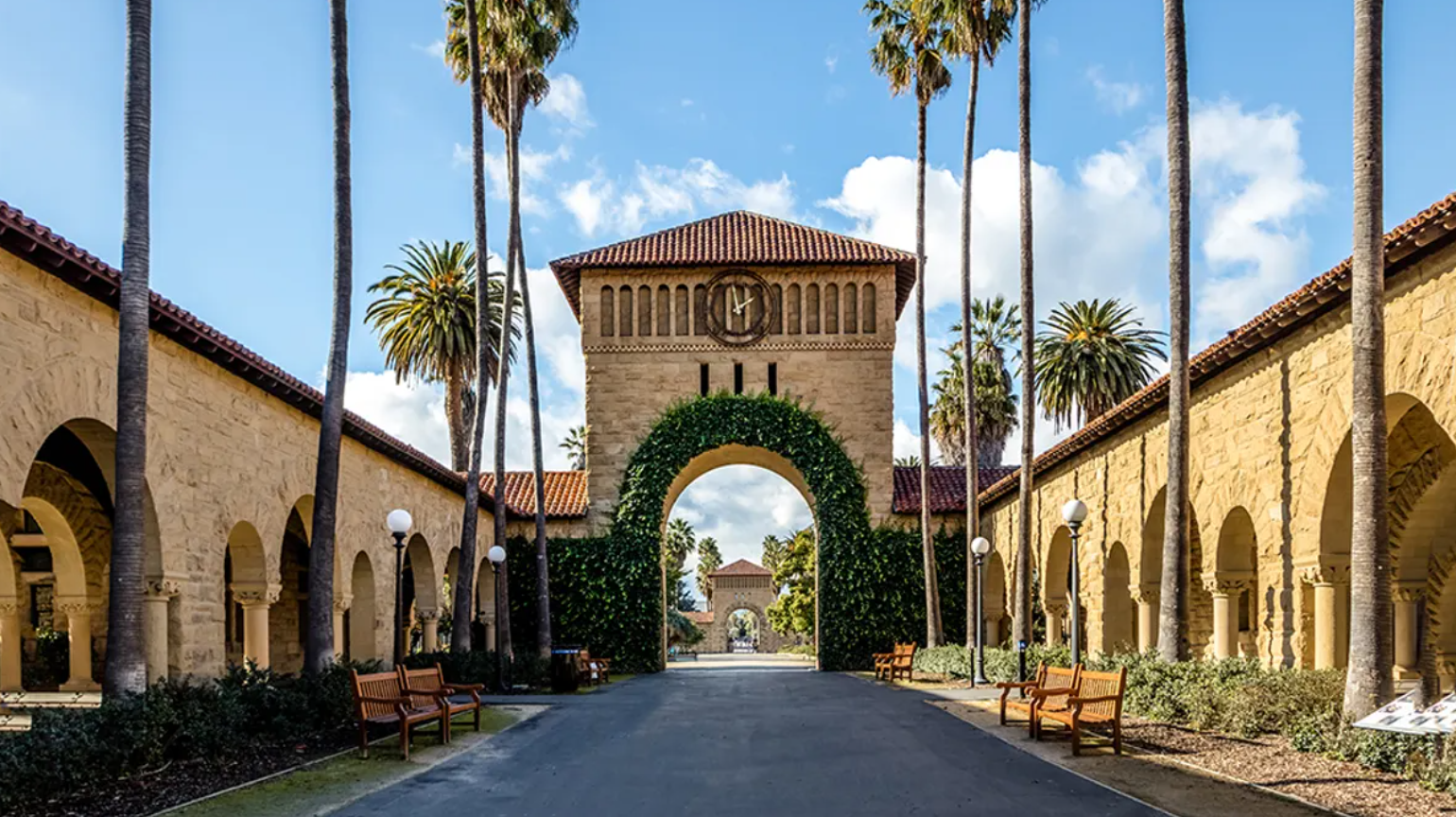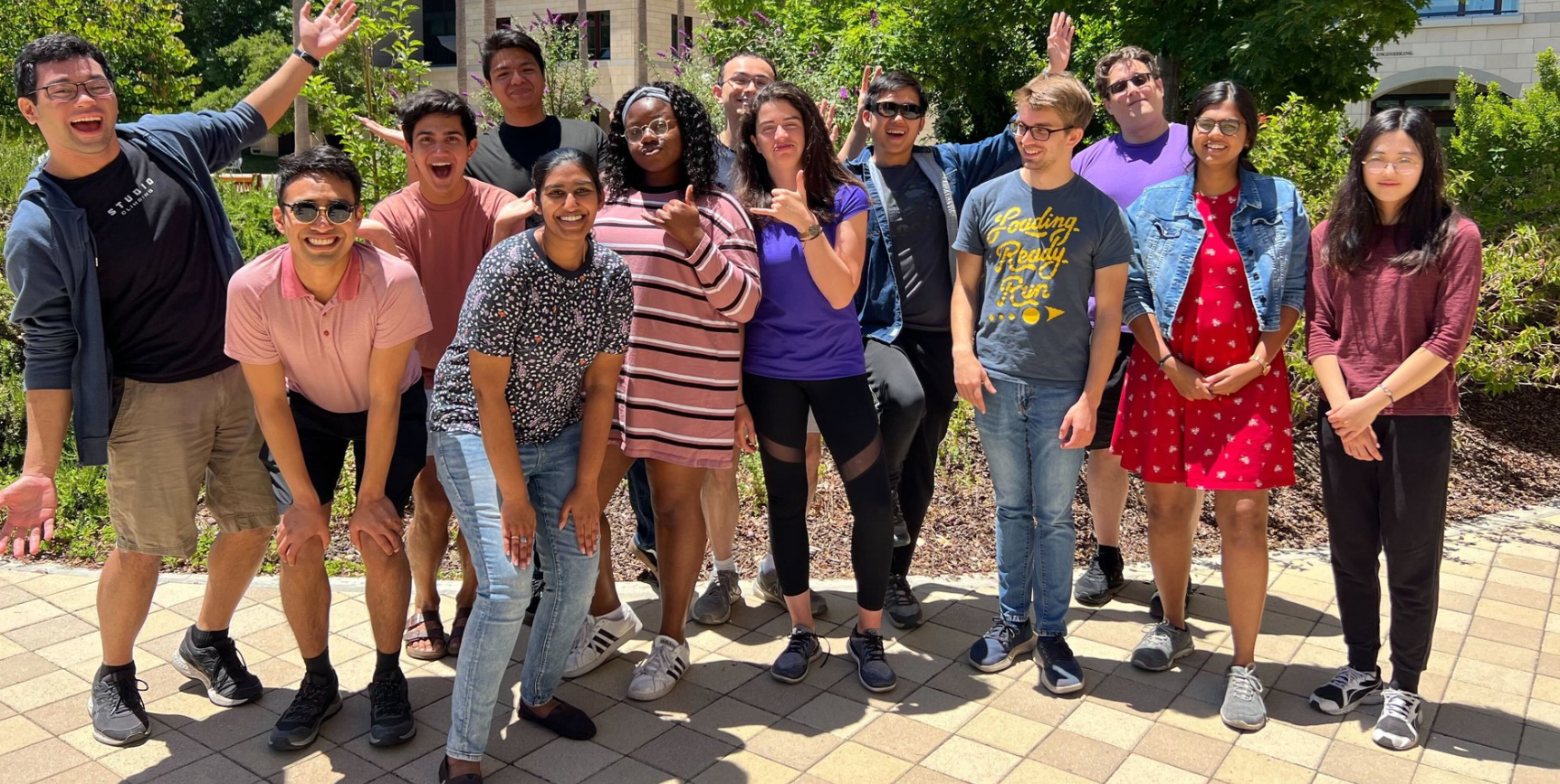The blog post addresses questions surrounding Stanford Acceptance Rate and provides the current acceptance rate and other helpful information to guide prospective applicants.
The acceptance rate for Stanford University’s class of 2025 stands at approximately 3.95%. In the 2022 admissions cycle, the university received a total of 55,471 applications and extended admission offers to only 2,190 students. These statistics underscore the increasing competitiveness of Stanford’s selection process.
The evolving acceptance rate trends of Stanford also underscore the institution’s commitment to fostering diversity and inclusivity among its student body. The class of 2025 includes 12% international students, a rise from the previous batch’s 9.9%. Furthermore, the number of represented nations increased from 56 to 72.
Stanford University draws applicants from all corners of the world, allured by its renowned opportunities for social and academic growth, its esteemed research reputation, and its intellectually vibrant student community.
Determining if your SAT or ACT scores meet Stanford’s requirements or if your high school GPA is competitive can be challenging. The admissions process at highly-selective institutions like Stanford can seem intricate. How does Stanford evaluate and select its candidates? What strategies can enhance your prospects? Should you aim to increase your test scores or participate in more extracurricular activities? Is applying through restrictive early action a viable approach?
Below, we’ve initiated an exploration of the comprehensive insights we possess about Stanford University’s admissions process. Continue reading to ascertain whether you stand as a formidable applicant for Stanford and gain valuable tips to bolster your chances of securing admission.
Contents
Stanford University Acceptance Rate

Undoubtedly, Stanford University maintains a remarkably high level of selectivity. As of 2023, the comprehensive Stanford Acceptance Rate rested at a mere 4%, signifying that admissions officers turned down over 96% of applicants.
It’s important to note that this overall rate encompasses Stanford’s restrictive early action acceptance rate, which is comparatively higher than the regular decision rate. Consequently, the true regular admission rate at Stanford hovers around 3%.
Landscape of the college admissions grows more competitive with each passing year, driven by an escalating number of applications.
This escalation underscores the necessity to distinguish yourself. Rather than feeling daunted by these admission statistics, understanding Stanford’s criteria allows you to tailor your college preparation and application to align with their expectations.
Stanford GPA Requirements
Let’s begin by considering your grade point average (GPA). Stanford’s admissions officials will assess this metric based on your high school transcript, which you’ll include in your comprehensive application.
It’s essential to recognize the significance of maintaining a robust unweighted GPA, achieved through a strategic selection of Advanced Placement (AP), International Baccalaureate (IB), or honors courses that your school offers.
Relying solely on weighted GPAs can be less informative due to the varying ways high schools assign weight, and they might not accurately reflect your proximity to the GPA standard required by Stanford.
To be candid, securing admission to Stanford generally necessitates an unweighted GPA approaching 4.0. This implies consistently earning nearly all As across your courses while simultaneously engaging in the most demanding courses available at your high school.
SAT Score and ACT Score Requirements

Stanford University, similar to the Ivy League institutions and many other colleges, places a preference on applicants providing either an SAT score or an ACT score as part of their application. Although Stanford adopted a test-optional policy in recent years, it’s evident that applicants with test scores are indeed favored by the university.
Stanford maintains an impartial stance between the SAT and ACT, allowing applicants to select the test that aligns better with their strengths. It’s recommended to thoroughly prepare for your chosen test and consider taking it multiple times for the best results.
Accepted students at Stanford exhibit a range of SAT and ACT scores. The provided table illustrates the 25th to 75th percentile SAT and ACT scores, with an average Stanford SAT score of 1520 and an average Stanford ACT score of 35.
However, it’s important to note that unless you possess affiliations with specific favored categories like athletes, legacies, or donors, your SAT or ACT score should ideally be positioned towards the upper end of the given range. This strategy maximizes your potential for admission success.
Stanford Average ACT Scores and SAT Scores, 25th to 75th Percentile Data
| Test | Average Admitted Student Score Ranges | Average Score of Admitted Student |
| SAT Total Range | 1470-1570 | 1520 |
| ACT Composite Range | 34-35 | 35 |
* Note that Stanford University superscores the SAT, but Stanford does not superscore the ACT. That means they will mix and match section test scores from different days for the SAT, but only look at composite ACT scores from a single test date.
Other Stanford Application Requirements
Those outlined are the primary academic prerequisites for Stanford. However, Stanford’s admission criteria extend beyond academics, encompassing a range of qualities that set successful applicants apart.
Beyond assessing your academic achievements, Stanford’s admissions officers are keen to gain insight into your individuality and the characteristics that define you. In addition to submitting your grades and test scores, several other pivotal facets play a significant role in Stanford’s selection process:
• Two teacher recommendations and one counselor letter
• A high school transcript
• A mid-year report
• A $90 application fee or fee waiver
• A completed Common Application
• Stanford-specific essays
Letters of Recommendation
To gain a more comprehensive understanding of your identity as a student beyond your academic records, Stanford University requests letters of recommendation from two of your teachers along with your school counselor.
While selecting whom to approach, it’s essential to base your decision not solely on those who may have assigned you the highest grades, but on individuals who possess a genuine familiarity with you and can craft detailed, personalized letters.
Stanford offers the opportunity for Additional Recommenders, and we highly recommend utilizing this option to highlight your leadership qualities and character. Stanford places significant emphasis on getting to know who you are as an individual, not solely focusing on your accomplishments.
Receiving insights from mentors and other individuals within your community who possess a deep understanding of your attributes outside of the classroom holds considerable importance for the Stanford admissions committee.
Counselor Recommendation & School Documents
Next, along with your academic records and the recommendation letter from your school counselor, the counselor will also submit a few supplementary documents on your behalf:
- A school report: This report provides insights into your school’s demographics and prominent attributes. It may encompass information such as any limitations on the number of AP classes you can enroll in.
- A mid-year report: This report serves as an update to Stanford regarding your grades during your senior year that might not be available when you submit your application. It ensures that Stanford is informed of your latest academic progress.
These items will also help Stanford contextualize your application.
The Common Application & Essay
Subsequently, you will be required to complete the Common Application (or Coalition Application). As you embark on your college application journey, you’ll become well-acquainted with this online platform. It serves as the interface for not only applying to Stanford but also to other prestigious institutions like Harvard University, Princeton, and Yale University. A significant portion of the Common Application pertains to standard demographic and educational details. You’ll also engage with the activities section, where you’ll elaborate on your involvement in extracurricular pursuits.
The activities section within the Common App is a crucial avenue through which students can outline their accomplishments beyond the classroom during their high school years. This section typically differentiates one applicant from another once academic scores and grades have been evaluated.
Additionally, the Common Application calls for a single personal essay, to be shared with all the colleges you’re applying to. This essay, limited to 650 words or fewer, provides you with the opportunity to convey an important moment or theme from your life to Stanford and other institutions.
A compelling Common App essay serves as a pivotal component of a competitive application. Be prepared to revise it multiple times, as this essay presents your chance to present Stanford with a deeper understanding of the person behind the impressive academic records and test scores. How can you effectively convey to Stanford who you are and what sets you apart?
Supplemental Essays
Finally, apart from the Common App essay, Stanford University and many other institutions mandate the submission of additional, school-specific essays. These essays carry significant weight within your application.
These essays offer you the platform to elucidate why Stanford aligns with your aspirations and provide ample room to articulate how you plan to contribute to the vibrant Stanford community.
While the specific content of these essays can vary annually, they typically inquire about your affinity for the university and may delve further into your achievements during high school. In the previous year, Stanford University posed a range of short-answer essay questions. Some of these topics included:
1. What is the most significant challenge that society faces today?
2. How did you spend your last two summers?
3. Name one thing you are looking forward to experiencing at Stanford.
Having a strong application strategy to get these essays drafted, revised, and done, as well as a coherent narrative to present in them, is essential for admission to selective schools like Stanford and other top-ranked colleges and universities.
Application Fee
Finally, you’ll need to pay a $90 application fee to submit your application through these online interfaces. These fees can be waived by showing financial hardship.
Application Deadlines
As you put together all these materials, keep in mind the eventual deadlines! Everything for Stanford must be submitted by:
• November 1 for Restrictive Early Action
• January 5 for Regular Decision
Restrictive Early Action decisions are released in mid-December, and Regular Decision applicants will hear online by April. Admitted students must decide by May 1 if they will attend.
Demographics of Admitted Students at Stanford
Stanford University admits students from all over the country and from diverse backgrounds. According to Stanford’s Class of 2026 profile, the demographic breakdown of students admitted into the Stanford was:
- 46% men, 54% women
- 29% Asian American
- 7% African-American/Black
- 17% Latinx
- <1% Native American/Pacific Islander
- 21% first-generation students
It’s essential to remember that due to Stanford University’s high level of selectivity, even if you possess a strong application for admission there, it’s advisable to consider applying to other institutions of comparable ranking. This approach extends to esteemed universities such as Harvard University, Yale University, and Cornell University.